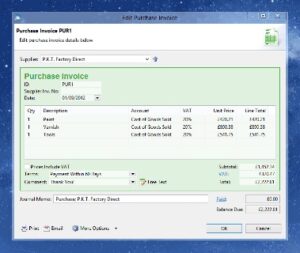Bookkeeping
Reconcile an account in QuickBooks Online
Balancing accounts might sound like a tedious task, but its significance cannot be overstated. Think of your business finances as a puzzle — every transaction, every payment, every deposit is a piece of that puzzle. Reconciliation is the process of fitting those pieces together accurately, creating a clear picture of your financial landscape. This process ensures that your recorded transactions align with the transactions reported by your bank, guaranteeing that no errors or fraudulent activities slip through the cracks.
Step 3: Compare your statement with QuickBooks
By marking transactions as cleared, it becomes easier to track which ones have been verified by the bank, minimizing the risk of overlooking any discrepancies. It begins with accessing the reconcile window by navigating to the Banking menu and selecting Reconcile. Then, you’ll need to enter the ending balance from your bank statement and the ending date. Next, review the list of transactions, ensuring that each one matches the transactions on your bank statement. You will then mark each transaction as cleared, either by ticking the boxes or by selecting Reconcile Now to clear all the transactions at once. Complete the reconciliation by clicking Reconcile Now to verify and finalize the process.
Adjusting transactions in QuickBooks is necessary to rectify any disparities identified during the comparison with the bank statement, ensuring the accurate synchronization of financial records. Marking transactions as cleared in QuickBooks Desktop signifies the validation of these transactions against the bank statement, contributing to the accuracy of the reconciliation process. Marking transactions as cleared in QuickBooks Online signifies the validation of these transactions against the bank statement, contributing to the accuracy of the reconciliation process. When reconciling an account, the first bit of information you need is the opening balance. If you choose to connect your bank and credit cards to your online account, QuickBooks will automatically bring over transactions and also the opening balance for you.
Accessing the reconcile tool in QuickBooks Online is the initial step in the reconciliation process, allowing users to review and match the financial records with the bank statement. When you create a new account in QuickBooks, you pick a day to start tracking the new importance of materiality transactions. You enter the balance of your real-life bank account for whatever day you choose. We recommend setting the opening balance at the beginning of a bank statement. Just like balancing your checkbook, you need to review your accounts in QuickBooks to make sure they match your real-life bank and credit card statements. If you reconciled a transaction by mistake, here’s how to unreconcile it.
How to Reconcile in QuickBooks Online?
Just like balancing your checkbook, you need to regularly review your accounts in QuickBooks. You need to make sure the amounts match your real-life bank and credit card statements. The reconciliation process is concluded by affirming that the closing balances match, signifying the successful alignment of the financial records with the official bank statements. Gathering the bank statement and transactions is the initial email protection | cloudflare step in reconciling a bank statement in QuickBooks, enabling the comprehensive matching of financial data with the official bank records. Entering the ending balance in QuickBooks Desktop is a critical step in the reconciliation process, ensuring that the financial records match the closing balance of the bank statement accurately.
How to Reconcile Balance Sheet Accounts in QuickBooks?
- This helps to verify the accuracy of the recorded transactions and identify any discrepancies between the company’s books and the actual bank statement.
- Frequent reconciliation is important to ensure your QuickBooks accounts remain accurate.
- It can also help with account audits and tax preparation by catching errors early.
- Below, we delve into a detailed explanation of the account reconciliation process within QuickBooks.
- Once you get your bank statements, compare the list of transactions with what you entered into QuickBooks.
This can get tricky and they know how to handle the next steps.Don’t have an accountant? QuickBooks provides the tools and functionalities to streamline this procedure, allowing for comprehensive adjustments to be made with ease and precision. Maintaining accurate transaction records is vital for financial reporting and decision-making processes within organizations. If you adjusted a reconciliation by mistake or need to start over, reach out to your accountant. These kinds of changes can get complicated and unbalance your accounts.
Step 4: Compare your bank statement and QuickBooks
QuickBooks, a leading accounting software, stands as a crucial tool in this endeavor. Its advantage lies in its ability to streamline and enhance the account reconciliation process, thereby contributing to the overall financial health of an organization. Let’s delve into the specific advantages that QuickBooks brings to the table.
By finalizing the reconciliation process, businesses can have confidence in the reliability of their financial records and make informed decisions based on accurate data. This phase is crucial as it ensures accuracy and integrity in financial reporting, aiding in identifying any discrepancies or errors that need to be resolved before finalizing the reconciliation process. Reconciling statements with your QuickBooks company file is an important part of account management. It ensures that QuickBooks entries align with those in limited liability company 2020 your bank and credit card account statements.




